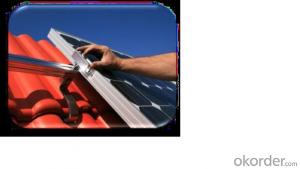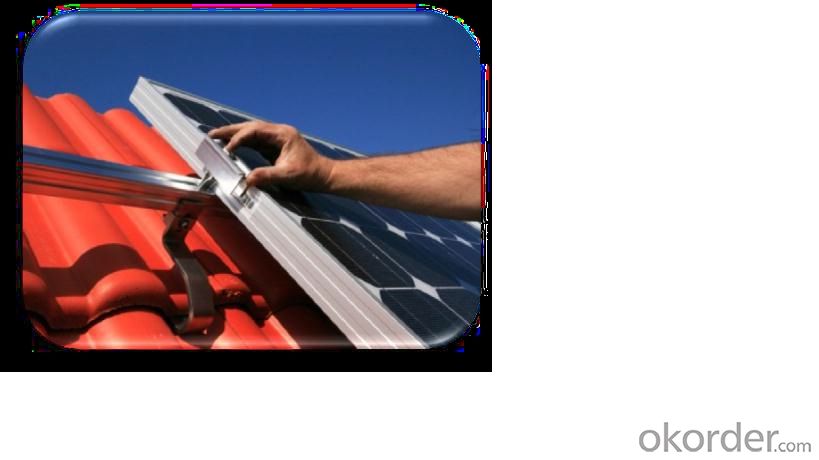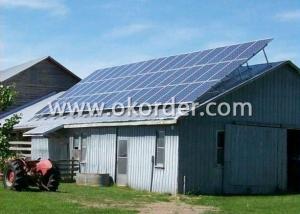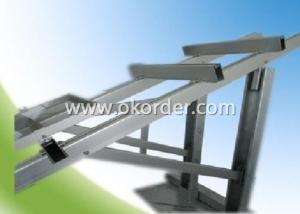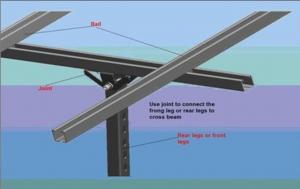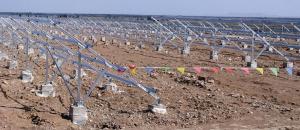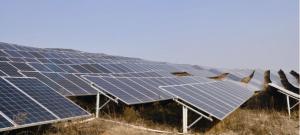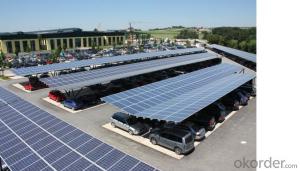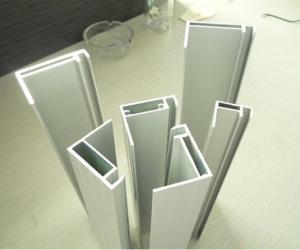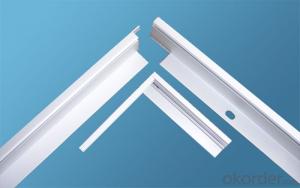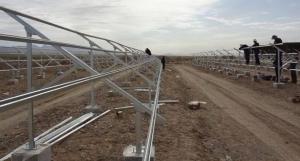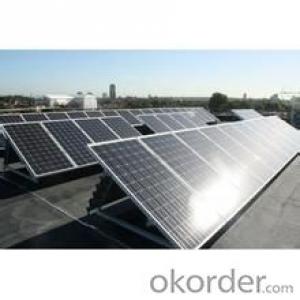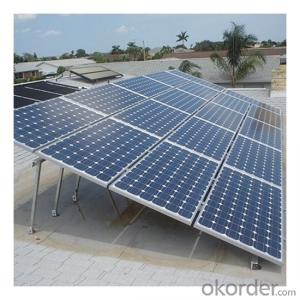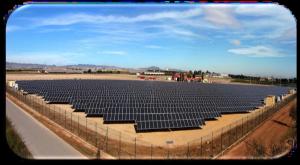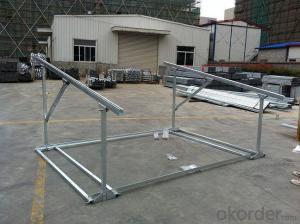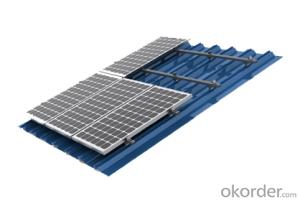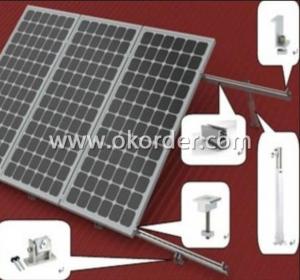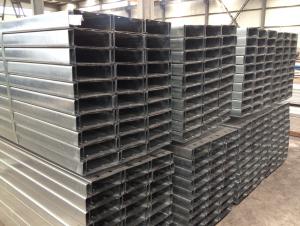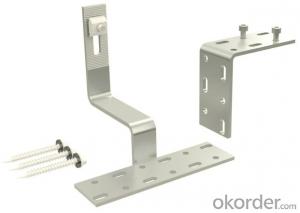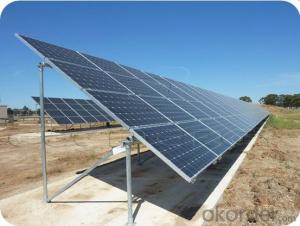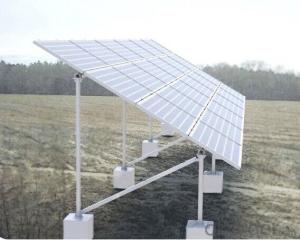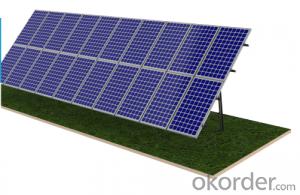Commercial Solar Mounting Systems - Roof System-1
- Loading Port:
- China Main Port
- Payment Terms:
- TT OR LC
- Min Order Qty:
- -
- Supply Capability:
- -
OKorder Service Pledge
OKorder Financial Service
You Might Also Like
Roof System-1
Die umfassende Auswahl an unterschiedlichen Komponenten und Systemen ermöglicht es,
mit Schletter-Systemen nahezu jede Modulkonfiguration auf jedem Dach zu befestigen.
Durch unsere hochwertigen und durchdachten Komponenten erzielen Sie schnelle Montagezeiten und verlässliche Haltbarkeit mit statischem Nachweis.
Bei der Auswahl der für Ihr Dach am besten geeigneten Variante haben Sie die Wahl zwischen einer dachparallelen und einer aufgeständerten Lösung.
Leichte Aufständerung auf Trapezblech (5 - 7° Aufstellwinkel) für gerahmte Module
Konzipiert für gerahmte Module mit ca. 1,3 – 1,7 m Höhe in Hochkantmontage
Befestigung auf der U-konstruktion meist mittels Trapezblechschellen
Schnell und einfach zu montieren
Bessere Hinterlüftung
Bessere Selbstreinigung
Optimale Lastabtragung über die Dachhaut
Mehrertrag bei günstigem Systempreis
- Q: Can a solar mounting system be installed on a rooftop with a membrane roof?
- Yes, a solar mounting system can be installed on a rooftop with a membrane roof. However, it is important to ensure that the installation is done properly to avoid any damage to the roof. A professional solar installer should be consulted to determine the best mounting method and ensure the integrity of the roof is maintained.
- Q: Can a solar mounting system be installed on a sloped roof?
- Yes, a solar mounting system can be installed on a sloped roof. However, the installation process may be slightly more complex compared to a flat roof. The mounting system will need to be designed and installed in a way that accounts for the slope of the roof to ensure proper support and stability for the solar panels. Additionally, the angle of the panels may need to be adjusted to optimize sunlight exposure.
- Q: How does shading affect the performance of a solar mounting system?
- Shading can significantly impact the performance of a solar mounting system as it obstructs the direct sunlight reaching the solar panels. Shading reduces the overall energy output of the system, resulting in lower efficiency and decreased power generation. Therefore, it is crucial to minimize shading by properly designing the mounting system, considering the orientation, tilt angle, and surrounding objects such as trees or buildings to maximize sunlight exposure and optimize performance.
- Q: What are the main components of a solar mounting system?
- The main components of a solar mounting system include the mounting structure, which supports and secures the solar panels, the roof attachment or ground mount, which connects the mounting structure to the building or the ground, and the racking system, which provides the framework for positioning and spacing the solar panels. Other components may include clamps, brackets, rails, and hardware necessary for installation and stability.
- Q: Are there any specific requirements for skylight or atrium design when using a solar mounting system?
- Yes, there are specific requirements for skylight or atrium design when using a solar mounting system. These requirements mainly relate to the structural integrity and load-bearing capacity of the skylight or atrium, as the solar mounting system adds additional weight and wind loads. Moreover, it is crucial to ensure that the skylight or atrium design allows for proper installation and maintenance of the solar panels, including access for wiring and cleaning. Additionally, considerations such as orientation, shading, and minimizing reflections may also impact the design of skylights or atriums when incorporating a solar mounting system.
- Q: Can a solar mounting system be used in areas with solar incentives for schools?
- Yes, a solar mounting system can certainly be used in areas with solar incentives for schools. These incentives are typically designed to promote the adoption of solar energy and make it more affordable for educational institutions. By installing a solar mounting system, schools can take advantage of these incentives to reduce their energy costs and contribute to a sustainable future.
- Q: Can a solar mounting system be used in areas with limited access to community solar initiatives?
- Yes, a solar mounting system can be used in areas with limited access to community solar initiatives. Community solar initiatives typically involve multiple individuals or organizations sharing the benefits of a solar energy system located in a central location. However, individuals or organizations in areas with limited access to such initiatives can still install their own solar mounting system on their properties to generate their own renewable energy, reducing their dependence on traditional energy sources and potentially saving money on electricity bills.
- Q: Can a solar mounting system be used in areas with solar incentives for universities?
- Yes, a solar mounting system can be used in areas with solar incentives for universities. These incentives are designed to promote the adoption of solar energy and encourage renewable energy initiatives. By installing a solar mounting system, universities can benefit from these incentives, such as tax credits, grants, or feed-in tariffs, which can help offset the initial installation costs and provide long-term financial savings. Additionally, using solar energy aligns with the sustainability goals of universities, demonstrating their commitment to reducing carbon emissions and promoting environmental stewardship.
- Q: Can a solar mounting system be used with solar-powered weather stations?
- Yes, a solar mounting system can be used with solar-powered weather stations. The solar mounting system provides a secure and stable platform for the installation of solar panels, which can be used to power the weather station. This allows the weather station to operate independently and continuously without relying on external power sources.
- Q: Can a solar mounting system be integrated with a building's existing structure?
- Yes, a solar mounting system can be integrated with a building's existing structure. It is possible to design and install solar panels on roofs, facades, or even as shading devices, seamlessly blending them with the building's architecture. This integration not only maximizes the use of available space but also provides additional benefits such as energy savings, reduced environmental impact, and aesthetic enhancement.
Send your message to us
Commercial Solar Mounting Systems - Roof System-1
- Loading Port:
- China Main Port
- Payment Terms:
- TT OR LC
- Min Order Qty:
- -
- Supply Capability:
- -
OKorder Service Pledge
OKorder Financial Service
Similar products
Hot products
Hot Searches
Related keywords
